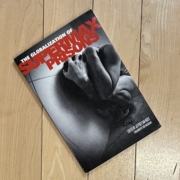On the need for a low cost, comprehensive, and up to date introductory book on graffiti and street art
Scholarly fields develop in a haphazard manner. Those interested in exploring the vicissitudes of a subject, may for one reason or another contribute to the body of knowledge by writing a conference paper, article or even book. Overtime due to competing demands and interests, these researchers may become disinterested, distracted, or exhausted, and move on to other fields of inquiry and pursuits.
Meanwhile our ability to learn about a subject is dependent on numerous factors. One of the most important is the accessibility and quality of written resources available to people who want to learn about a field.
Some of these (like free material available on the world wide web) are widely distributed and generally easy to access, whereas other written sources require users to make an investment of resources such as attending a class, enrolling in a program of studies, or reading an article or a book.
And just because content is freely available it’s no guarantee that it is of good quality. Sometimes it is quite the opposite.
Nowhere does this seem most pertinent than the field of graffiti and street art studies.
Over the past five decades, numerous scholars have conducted research on graffiti and street art. This work has appeared as articles published in a variety of academic journals and has also resulted in close to a dozen English language academic books. These efforts have examined various theoretical concerns, such as youth subculture, masculinity, and gentrification, as they apply to graffiti and street art and the individuals who engage in this behavior. Meanwhile a handful of edited books review graffiti and street art in a comprehensive manner.
These works are important building blocks in the scholarly understanding of graffiti and street art. They are great reference tools for the field, are important building blocks in the scholarly understanding of graffiti and street art, and are the basis of important discussions held by people deeply interested in graffiti and street art.
However, there are noticeable shortcomings with some of these books. These drawbacks mainly revolve around the fact that they are outdated, take narrow (sometimes esoteric) perspectives on the subject matter, ignore significant relevant scholarship, are overly academic in tone, and can be comparatively quite pricey.
The development of scholarship on graffiti and street art is predictably uneven, being shaped more by academic arguments, interests of the scholars who conduct research on this subject, and the gatekeeping activities performed by editors and reviewers for academic journals and publishing companies.
Meanwhile, the field of graffiti and street art is frequently changing including, but not limited to, the important role and influence of social media websites like Facebook and Instagram, responses by municipalities, and the increasing commodification of graffiti and street art.
Although serendipity has its advantages in some domains, a book on graffiti and street art that not only treats the subject matter in a comprehensive manner, but is also up to date and engaging could prove to be very helpful.
This book, would integrate scholarly research, interviews with practitioners, and images of graffiti and street art to explain the fields’ growth, the people who engage in this activity, and reactions to it, accessible to non-specialists and scholars alike. The book would also review causes, reactions, and so-called solutions to challenges generated by the existence of graffiti and street art.
Until then knowledge about graffiti and street art will be more idiosyncratic in the manner it is collected and presented to wider audience.











